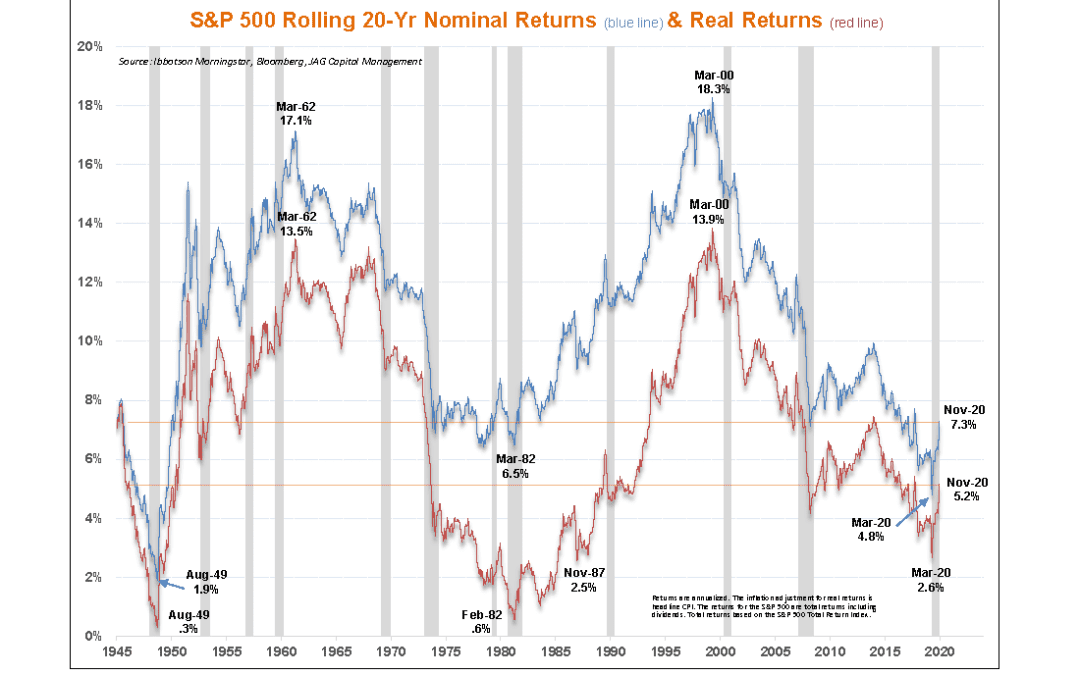The S&P 500 was up 33% in 2019 and is up over 50% since March 2020. It continues to push all-time highs. The Dow Jones Industrial Average and other equity indices are also breaking records while showcasing similarly eye-popping performance over the same timeframe. While welcomed by many long-term investors, these returns may be viewed with cautious skepticism considering the severe economic ramifications of the ongoing pandemic and a worry that the market’s strength in recent years will come to an end.
The impressive returns in 2020 come on the heels of the longest bull market in history, lasting more than 11 years. This was also the second strongest bull market, returning over 400%. For some, the coronavirus-induced bear market was suspiciously short. It began on February 19, 2020, and ended on March 23, 2020, making it the shortest bear market in history. Understandably, some investors are dubious of the whipsaw price movement and concerned about overinflated valuations of domestic equities.
As a refresher, a bull market is a situation in which stock prices rise by 20%, usually after a drop of 20% and before a second 20% decline. A bear market is a condition in which securities prices fall 20% or more from recent highs.
